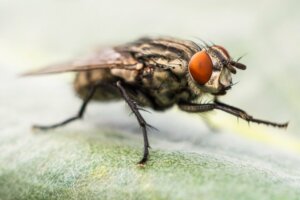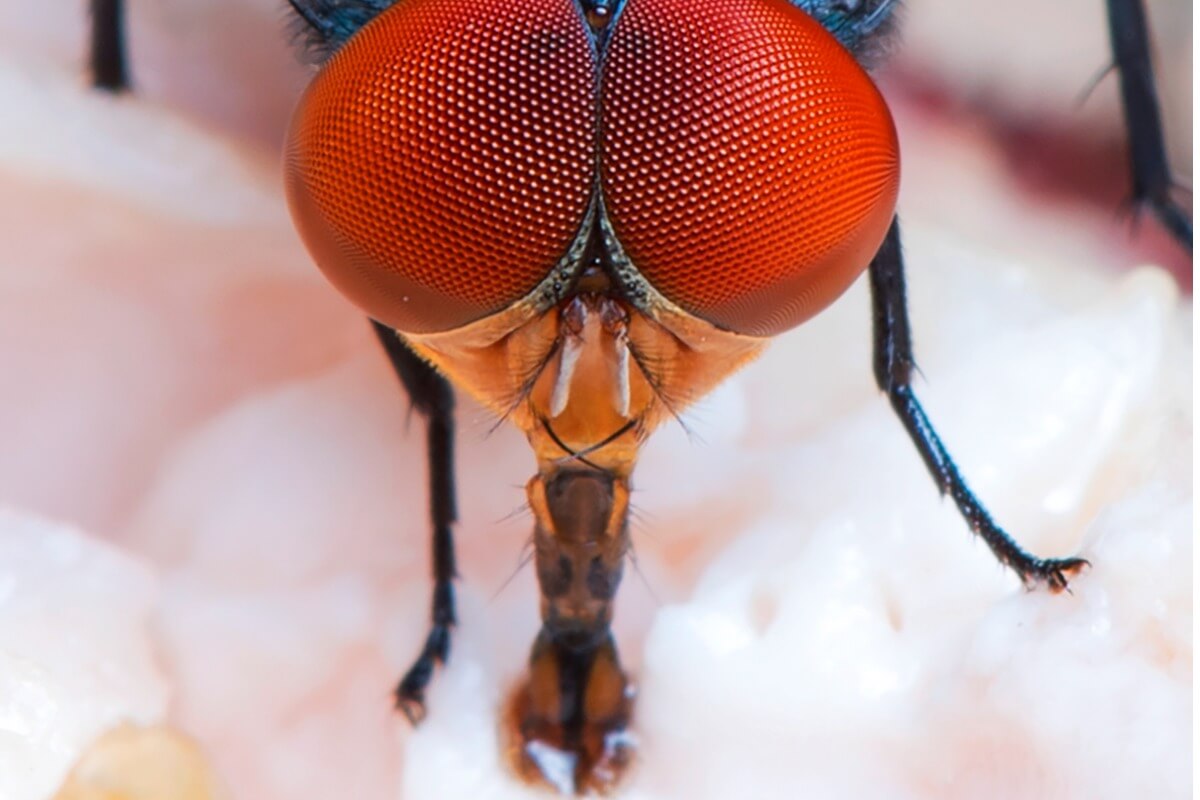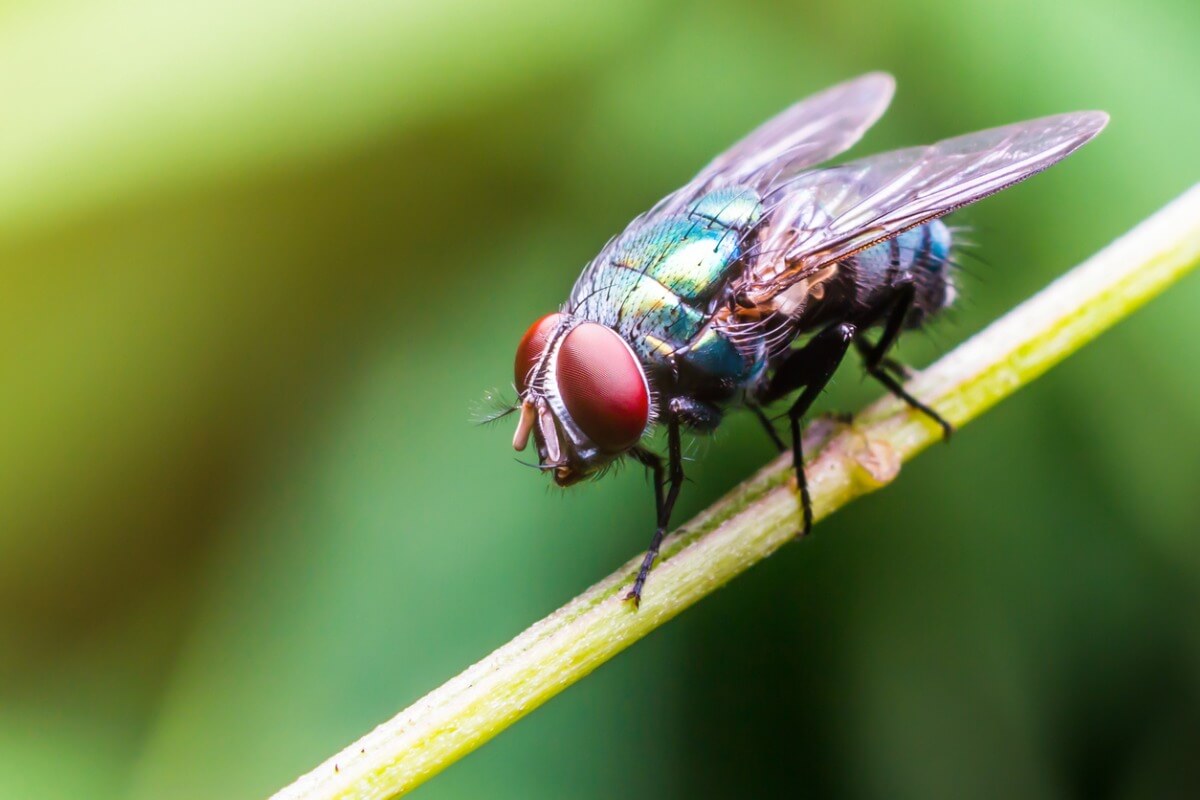Why Do Flies Rub Their Legs Together?


Written and verified by the biologist Samuel Sanchez
Surely when you think of a fly, the image that comes to mind is that of an invertebrate constantly moving its limbs. No wonder, because we’ve all seen how flies rub their legs together at some point after landing on something. But why do they do it?
As random as some behaviors may seem in the animal kingdom, everything has an explanation caused by centuries of survival. Here we’ll show you why flies rub their legs together and what biological reason it has. Don’t miss it!
Defining flies
All flies are insects belonging to the order Diptera. This taxon is one of the most diverse biological groups, containing an estimated 1,000,000 species. Flies are close relatives of mosquitoes, horseflies, hoverflies, syrphids, and a few other bloodsucking insects. All of these invertebrates are characterized by their excellent flight capabilities.
Typical houseflies belong to the Muscidae family, which contains about 4,000 described species distributed in 100 different genera. They share a number of easily distinguishable traits, including the following:
- They have 3 tagma or body segments: A head (with eyes, mouth, and antennae), a thorax with 3 pairs of limbs and a pair of functional wings, and an abdomen with various organs and reproductive structures.
- They have compound eyes: Flies have excellent vision that they use to maneuver during flight.
- A second modified pair of wings: Flies have a typical pair of wings, but underneath them is a second pair of modified, rod-shaped wings, which are called halteres. These structures are responsible for maintaining the insect’s balance as it positions itself and flies through the three-dimensional environment.
- They undergo a complete metamorphosis: Dipterans go through a larval stage, either on land or in water. Once they reach their last larval stage, they form a pupa and, after a time, the adult individual emerges from it.
There are many, many species of flies, however, the best-known ones carry a proboscis that they use to suck up all kinds of organic matter they find in the environment. They feed on milk, sugar, feces, superficial blood, and rotting fruit, among many other things.
Some flies are hematophagous, that is, they feed on blood. However, this isn’t true of domestic species.

The fly species par excellence (Musca domestica)
The fly we refer to when we talk about the domestic species is almost always Musca domestic. This dipteran is present almost everywhere in the world, especially in areas with high human activity. It’s associated with urban areas because it uses feces and rubbish to feed its larvae before metamorphosis.
Although these diptera fly over anthropic environments almost all year round, they live longer and are much more active in seasons with temperatures between 10 and 26 °C. For this reason, we tend to associate their presence with the spring and summer months. An adult fly lives 15 to 25 days and, in its adult stage, the female is capable of laying up to 150 eggs before dying.
Flies don’t directly harm humans, but they’re capable of transmitting diseases by carrying bacteria associated with their body surface.
Why do flies rub their legs together?
Now that you know a little more about their biology and ethology, we’re ready to answer why flies rub their legs together every time they land on a surface. There are two main reasons and we’ll look at them in detail in the following lines.
1. Chemoreception
Incredibly, flies have a series of chemoreceptors distributed throughout their bodies that register stimuli by touch. The third segment of the antennae and the maxillary palps represent the sense of smell, while taste receptors are found on the labrum, pharynx, limbs, wingtips, and female genitalia.
For this reason, a fly is able to identify whether an item is edible just by landing on its surface and walking over it. These diptera rub their legs together (presumably) to stimulate their chemoreceptors and thus better recognize the material they’re about to put in their mouths.
2. Hygiene
This point is closely related to the previous one. Since the forelimbs have taste receptors, they must remain as clean as possible in order to register effectively and quickly. Unfortunately, flies carry a lot of dirt with them as they land on surfaces and fly (dust particles, pollen, liquids, etc.).
For this reason, the first thing a dipteran will do when it lands on a surface is to rub its legs in order to clean itself. Not only that, but it’ll also try to remove dirt from its head, wings, halteres, abdomen, and the rest of its limbs. For animals with such a reputation for dirt, the reality is that they’re extremely clean.
The act of grooming is repeated periodically and depends on the time of day, as each species of fly is more active at certain times than others.

Flies: a world of secrets
Finding out the truth behind why flies rub their legs together is a real surprise, since few people have theorized that it’s due to their sense of taste. However, there are many more interesting facts about diptera: they fly at speeds of up to 10 kilometers per hour, they perceive time “in slow motion” and their angle of vision is 360°.
Unfortunately, human coexistence with these diptera is conflicting, to say the least. We need to keep flies away from the house, as they can contain bacteria and other parasites in their legs and transmit diseases when they land on our food. Although they’re very interesting creatures, it’s best to keep the house clean and free of rubbish to avoid their appearance.
Find out about 9 species of fly in our suggested article below.
All cited sources were thoroughly reviewed by our team to ensure their quality, reliability, currency, and validity. The bibliography of this article was considered reliable and of academic or scientific accuracy.
- Musca domestica, ADW. Recogido a 30 de noviembre en https://animaldiversity.org/accounts/Musca_domestica/
- Piezas bucales (de los insectos). Recogido a 30 de noviembre en http://www7.uc.cl/sw_educ/agronomia/insectos/html/morfologia/p_bucal.html
This text is provided for informational purposes only and does not replace consultation with a professional. If in doubt, consult your specialist.